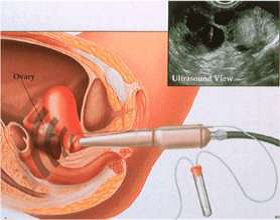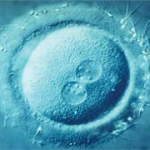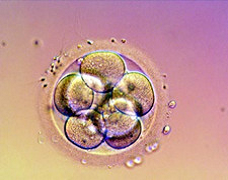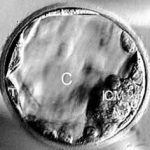In vitro fertilisation is the most commonly used assisted reproductive technology (ART). It is commonly known as the “test tube baby” procedure. In this treatment the union or fusion of the egg and sperm, called fertilisation which normally takes place in the fallopian tube is carried out in the laboratory. The fertilised eggs are then transferred into the uterus to continue to grow and develop into a baby.
IVF is recommended for the following conditions:
- Blocked or diseased tubes
- Endometriosis
- Disorders of ovulation
- Cervical problems
- Failure of IUI
- Failure of conventional fertility treatment
- Unexplained infertility
- Use of donor eggs or surrogate mother
The IVF treatment at a glance comprises:
- The pill to programme the cycle
- Down regulation of the pituitary using either nasal sprays or daily injections
- Stimulation of the ovaries using daily injections
- Monitoring the growth and development of the eggs.
- Collection or retrieval of the eggs
- Collection, washing and preparation of the sperm sample
- The incubation of the eggs and sperm together in laboratory, to allow fertilisation and early development of the embryo
- Transfer of the embryo into the uterus
- Luteal phase Support
- Two weeks wait for a pregnancy test
Stimulation, Blood Tests and Scan.
Stimulation of the ovaries is undertaken in 5 phases comprising:
- Oral contraceptive pill to regulate and regularise the menstrual cycle is taken for one or two cycles. The pill pre-treatment is also know to improve the response of the ovary to stimulation
- Down-regulation of the pituitary using either GNRH-a nasal spray or daily injection is started the week before the treatment cycle and continued without fail up to the time of egg collection.
- Stimulation of the ovaries using specific and timed doses of hormone injection is started after the day 3 hormone tests and ultrasound scan and continued up to when the egg is mature and ready for collection.
- Monitoring of the development of the eggs using hormone blood tests and internal ultrasound scan is undertaken daily, concurrent to stage 3- stimulation of the ovaries.
- Final maturation and ripening of the egg is undertaken using a special trigger injection of hormone called HCG when the developing follicles have reach a critical size on ultrasound examination.
Ultrasound Guided Egg Collection
Egg collection is undertaken approximately 36 hours after the trigger or egg ripening injection under sedation or light general anaesthesia on a day case basis. There is no cutting involved. A specially designed needle is used and passed under internal ultrasound guidance through the vaginal wall into the ovaries to collect the eggs. After a couple of hours rest you should be fit to return home with an escort.

The eggs are examined for quality and maturity by Embryologist using high power zoom microscope, before being placed in a special and carefully controlled environment in an incubator prior to insemination with sperm or ICSI procedure.
Sperm Collection
Sperm collection is undertaken without fail on the day of egg collection. Preparation and sperm washing is undertaken in order to concentrate the fast swimming sperm with the best size and shape to be used for either insemination of the eggs or ICSI procedure.
Sperm Washing & Preparation
The purpose of sperm washing it to remove dead sperm and chemicals that interfere with fertilisation to enable:
- The fastest swimming sperm with the best shape and size to be concentrated before use in ART and IVF procedures
- Up to 80% separation of X and Y bearing sperm to provide opportunity to balance the sex in the family
- To remove bacteria and virus including HIV particularly in HIV discordant couples.
Embryo Growth
The following day irrespective of the method used to facilitate fertilisation (egg insemination in a dish or ICSI) the Embryologist will check for fertilisation. After which the fertilised eggs are further incubated for 2 – 5 days during which time it undergoes exponential growth from 2 to 4 then 8 to 16 cell stages and so on.



Freezing of Sperm & Embryo
Cryo-preservation offers unique opportunity to freeze sperm or embryo for later use. For example, freezing of the sperm may be the only way in which a couple can have assisted conception if the male partner is away at the critical time. The frozen sperm specimen is thawed and used as required.
As regards embryo freezing, good embryos frequently remain after the initial fresh embryo transfer. The embryo not immediately transferred can be frozen and used at a later date without the need for fresh stimulation of the ovaries and its associated costs.


